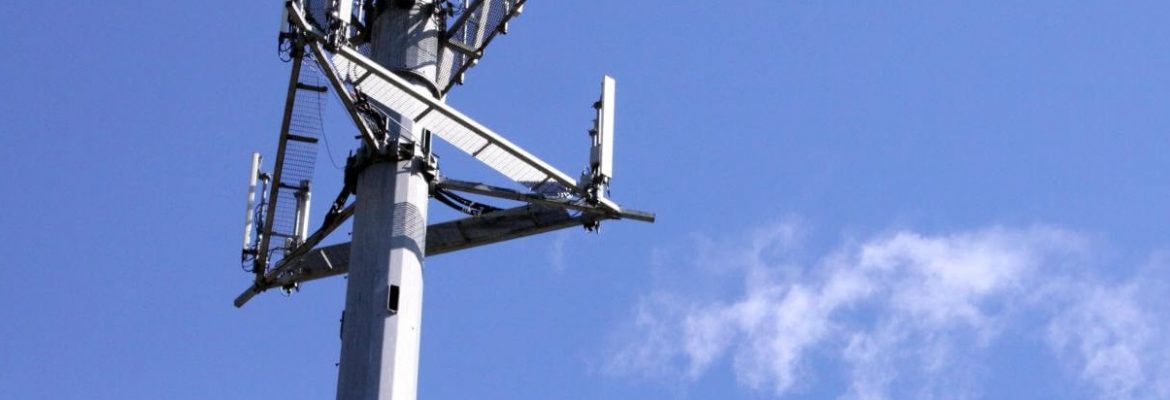Everything you should know about cell towers
We all see cell towers everywhere around us, but do you actually know how they work and how important they are? If you were going to dig some information about what a cell tower/cell site is, here is a guide we created for you with everything you need to know on that topic.
What is a cell tower (cell site)?
A cell tower is a cellular telephone site where electric transmissions equipment and antennas are mounted which lets the surrounding area use wireless communication devices. Some of this equipment are transmitters, recipients, control electronics, and additional power sources used for reinforcement.
Cell towers are usually founded by a tower company or a wireless carrier. Moreover, they enlarge their network coverage or capacity and offer a better reception signal in that area. The objective of a cell tower is to ease the signal reception of cellular phones and other wireless communication devices such as telephones, TVs, and radios in a cellular network.
How do cell towers work?
Once you use your cell phone to make a call, it releases electromagnetic radio waves (radiofrequency or RF energy). After the radio waves are released, the antenna from the nearest cell tower will receive them. In fact, the antennas of a cell tower can both receive and transmit signals from cell phones. After receiving the radio waves from your cell phone, it will then transmit the signals to a shifting center which is a telephone exchange for cell phones. This lets the call be attached to either another cell phone or to a telephone network. All of this can happen within only mere seconds!
Cell towers are truly useful in transmitting a signal to our cell phones and other wireless devices. If you’re having trouble finding a signal for your mobile phone, you may need to check if any structures are blocking a cell tower from your location.
The 5 components of a cell tower
Here are the 5 recognizable parts of a cell phone tower:
1. The Tower structure (4 types)
Lattice Tower (self-supporting tower): it manages the greatest adjustability and is commonly used in heavy loading conditions.
Monopole Tower: it is a single steel or concrete pipe tower. It is usually not taller than 50 meters and needs one foundation.
Guyed Tower: it needs the greatest amount of land. Most of the radio and television towers are using this type of structure. It is a straight-shape tower connected by wires that support and anchor the structure. The latter is joined to the ground in all directions.
Stealth Tower: these towers are typically required by councils and owners. They are more expensive than the other types of cellphone towers as they need additional material to conceal their appearance.
2. The Equipment
The renters who join their antennae to the cell tower use transceivers and other supportive equipment established in cabinets or shelters. The wireless carriers use highly protective material to protect their equipment. Some carriers place outdoor cabinets on concrete pads whereas others use prefabricated equipment shelters.
3. The Antennas
There are multiple antennas joined to a cell tower. Furthermore, they are normally mounted on a head frame. Sometimes there are only three antennas mounted. However, some cell towers have up to fifteen antennas per carrier. The number of antennas depends on:
- Technology
- Antenna performance
- Coverage
- Capacity required
4. Utilities
Cell towers have utilities installed at the site so that the carriers can use them. Each initial carrier gets to have a direct electrical run as well as an on-site phone service.
5. Access
Each cell tower will need access by the carriers for both ongoing maintenance or repair activities and initial installations. Those may need a separate route to the mobile tower site.
What’s the range with each cell tower?
Some of you may wonder when multiple cell towers stand near one another, what could the range of each cell tower be? In fact, the range of a cell tower is not a fixed figure and it may depend on some following factors:
- The height of the antenna on top of the surrounding landscape
- The constancy of the signal in usage
- The rated power of the radio transmitter
- The directional characteristics of the antenna arrangement on the area
- The assimilation and echo of radio energy by buildings or greenery
- The local geographical, regulations, and weather conditions
What about interference between cell towers?
If there are enough cell towers to cover a wide area, the range of each tower will be arranged so they overlap from or to other areas. This is to avoid interference troubles with other cell towers. Normally, these structures are grouped in areas with high population density or with the most potential users. Amazingly, when we’re traveling somewhere, our phones can switch from one cell tower to the next during a conversation. It will automatically pick the strongest signal that is nearest to you.
Now you know how cell towers work, what they consist of, as well as how important they are for us. By having cell towers in your surroundings, it allows you to communicate with your family and friends within seconds, even though they are on the other side of the world.

